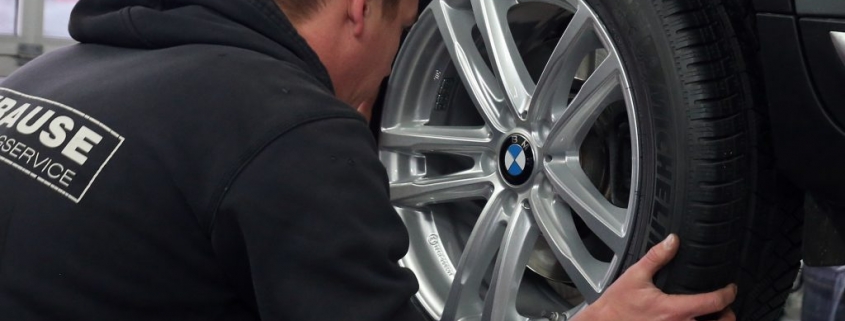How to Read the Numbers and Letters on Tires
Keeping good tires on your car is a vital component of routine vehicle maintenance. The buying experience might not be the most daunting, but a few industry secrets can help you make the correct decision. Along with brand choice, you have to think about various sizes, tread types, and categories. With that said, here are a few secrets to decoding the numbers and letters so that you know exactly what you’re looking at. It’ll make your next tire-shopping experience easier.
Understanding the various types of tires
In 1888, Mercedes-Benz introduced the first gasoline-powered car. This rudimentary vehicle rode on pneumatic tires — essentially a metal band covered with a rubber tube filled with air. It wasn’t until 1905 that manufacturers began adding tread patterns. Since then, 116 years ago, rubber is still be used to produce tires, but technology has come a long way.
With the advent of tread pattern technology came various models for specific seasons and surfaces. Generally speaking, there’s a model designed for everyone. They’re based on three straightforward criteria: the weather in which the vehicle is most commonly driven, vehicle type, and driving style.
As for basic types, there are summer, winter (or snow), all-season, performance, passenger, and truck models. Summer tires are typically designed for cars, minivans, crossovers, SUVs, and pickups that drive in climates with temperatures that typically don’t drop below 45 degrees Fahrenheit. Conversely, winter tires are intended for climates with temperatures below 45 degrees.
How to decode the letters and numbers on tires
According to a helpful Kelley Blue Book guide, codes follow the following pattern: “Tire Type | Tire Width/Aspect Ratio | Tire Construction | Wheel Diameter | Load Index | Speed Rating.” KBB breaks it down using this example code:
P 225/45 R 18 95 H
The “P” at the beginning of the above example represents “passenger.” Unless you’re purchasing for a commercial vehicle, you’ll likely choose tires whose code begins with “P” for passenger vehicles or “LT” for light trucks and SUVs. The first three-digit number, 225, stands for the width in millimeters. Some vehicles, such as drag cars, might have tires with a smaller width in the front to reduce weight and a larger width in the back to improve traction. This is called “staggering” in the drag racing world.
The second two-digit number above, 45, refers to the height-to-width ratio. In KBB’s example, the height is 45 percent of the model’s width.
The “R” means it was manufactured with radial construction — usually, the metal cords are laid out 90 degrees from the direction of travel. KBB says that nearly every tire made for passenger vehicles has this characteristic. However, models often used on trailers have their metal cords crisscrossed. They’re called “bias-ply” tires.
The next two-digit number, 18, stands for the diameter of the vehicle’s wheel. Unlike the width, the diameter is in inches.
The next number, 95, is the load index. That’s the maximum amount of weight a fully inflated tire can safely support. The example above supposedly could handle up to 1,521 pounds.
Last, the “H” stands for the maximum speed the tire can safely travel. For example, this model should not exceed 130 mph. According to a similar guide by Pep Boys, a “W” speed rating limits the speed to 168 mph.
Other common terms to know
Other than the general code, knowing several other terms can help you. For example, the United States Department of Transportation requires manufacturers to determine how well a certain tire maintains traction during a straight-line braking test. That rating must then be molded into the outer sidewall. Grades range from “AA,” the best, to “C,” which is the worst.
The DOT also requires models to carry a “treadwear grade” indicating how fast the tread wears, in contrast to standardized test tires of the same type. Also called the Uniform Tire Quality Grade (UTQG), this number is stamped on the sidewalls.
RELATED: Watch Out for This Deadly RV Tire on Your Motorhome
The post How to Read the Numbers and Letters on Tires appeared first on MotorBiscuit.







